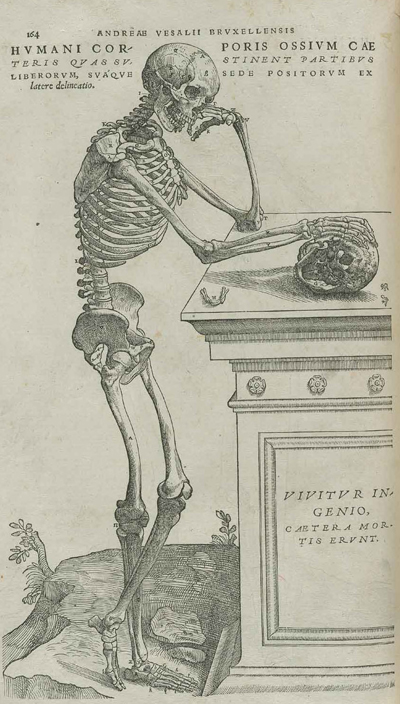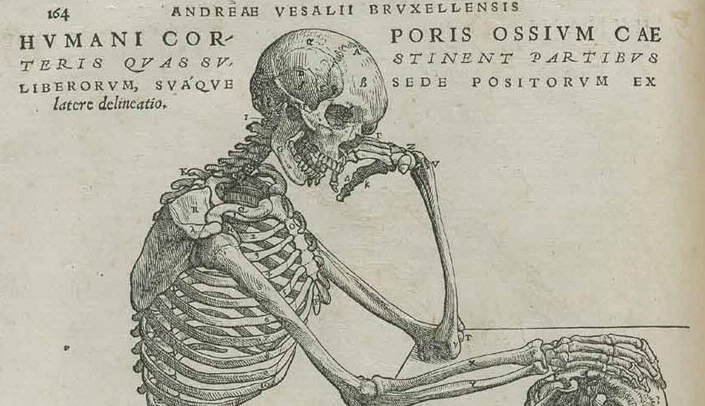What does an early anatomist, born in 16th century Belgium, have to do with UNMC? Quite a bit, as it turns out.
 |
Familiar to many at UNMC, this image from Vesalius’ work is displayed nearly life-size at the entrance to the Gross Anatomy Lab on the 2nd floor of Wittson Hall. |
In 1543, his famous work “De corporis humani fabrica libri septem (Seven books on the fabric of the human body)” was published. The same year, he was appointed court physician to Charles V, Holy Roman Emperor. He later set out on a pilgrimage to Jerusalem, but while in Cyprus, he was called back to Italy to take a chair in anatomy. On his return to Europe, the ship in which he was traveling wrecked on a Greek island, and he died there in October 1564.
The McGoogan Library owns a second edition (1555) of “De corporis humani fabrica,” as well as a recently published two-volume facsimile and complete English translation of both the first and second editions. Along with these and other volumes, the library owns a wood-block print of an illustration showing the complete series of cranial nerves, which was copied from Vesalius’ original work in 1539. It is one of only a few known to be in existence.
The print was acquired with the assistance of Edward Holyoke, M.D., Ph.D. (1908-2001), chairman of the anatomy department from 1960 to 1973. A native Nebraskan who received his B.S., M.A., and Ph.D. degrees in anatomy from the University of Nebraska, as well as an M.D. degree in 1934, Dr. Holyoke taught generations of medical students at UNMC.
Dr. Holyoke spent his entire academic career at the University of Nebraska College of Medicine, moving up the academic ranks steadily throughout the 1930s and 1940s. After his time as department chair, he remained on the faculty as a professor of anatomy and was named professor emeritus in 1983, retiring from the faculty in 1995. He wrote extensively and was a contributing author to several anatomy textbooks, as well as having a lifelong interest in the history of medicine.
In recognition of Vesalius’ 500th birthday, the library is displaying several works by and about this important anatomist, along with the 1539 plate and the recent translation of his works.
Please visit the library to see these important anatomical works.

I always wondered how some of these fantastic artifacts came to UNMC. Thanks for the research. This etching is particularly gorgeous.
I hope that this remains up for a week or more, so that I have time to stop and visit. We are blessed with an incredible library team!